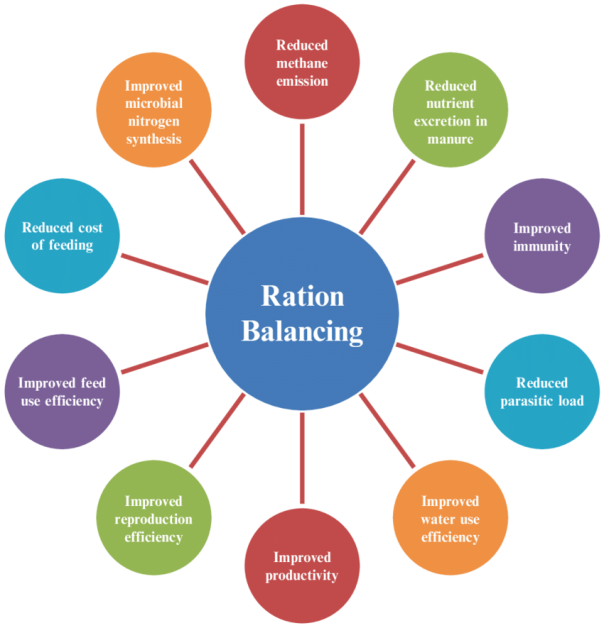 Farmers feed their animals based on their traditional knowledge and information passed through generations with crop residues, locally available one or two feed ingredients like brans, oil-cakes, chunnies, grains etc. and seasonally available green fodders. They rarely offer mineral mixture to their animals or in a very less quantity of 25g to 50g per day. In most of the cases, the quantity of feed/fodder offered to animals is either more or less than the requirements. This leads to an imbalance of protein, energy and minerals in their ration. Animals on such imbalanced ration produce milk sub-optimally, cost of milk production is higher and it affects the health and fertility of animals. Therefore, it is necessary to educate farmers on feeding of balanced ration.
Farmers feed their animals based on their traditional knowledge and information passed through generations with crop residues, locally available one or two feed ingredients like brans, oil-cakes, chunnies, grains etc. and seasonally available green fodders. They rarely offer mineral mixture to their animals or in a very less quantity of 25g to 50g per day. In most of the cases, the quantity of feed/fodder offered to animals is either more or less than the requirements. This leads to an imbalance of protein, energy and minerals in their ration. Animals on such imbalanced ration produce milk sub-optimally, cost of milk production is higher and it affects the health and fertility of animals. Therefore, it is necessary to educate farmers on feeding of balanced ration.
In the operational area of the Company also, producers are following old feeding practices. To encourage the better feeding practices as per the requirement of a cattle, Company has adopted Ration Balancing Programme (RBP). Under this programme, milk producers are advised on balanced diet feeding for animals which has been formulated with the help of software. Milk producers are advised to make balanced diet using available food ingredients with them which results into increase in milk production, animal health and decrease in milk production cost.
Features of RBP
- Registration of animals with unique ear tag identification number.
- Assessing nutritional status of animal.
- Assessing chemical composition of local available feed resources.
- Assessing nutritional requirement of animal.
- Formulating least cost balanced ration using local available resources.
Benefits of Ration Balancing Programme
- Proper use of locally available feed resources at possible least cost
- Increases milk production with more fat and SNF
- Increase in net daily income
- Improves reproduction efficiency
- Reduces inter-calving period and increases productive life of animals
- Improves the general health of animals
- Improves the growth rate in growing calves, leading to early maturity

